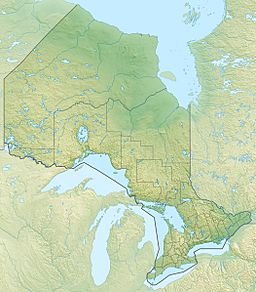Telescope Lake facts for kids
Quick facts for kids Telescope Lake |
|
|---|---|
| Location | Kenora District, Ontario |
| Coordinates | 50°55′49″N 94°24′47″W / 50.93028°N 94.41306°W |
| Type | lake |
| Part of | Hudson Bay drainage basin |
| River sources | Rostoul River |
| Primary outflows | Rostoul River |
| Basin countries | Canada |
| Max. length | 8.8 km (5.5 mi) |
| Max. width | 1.5 km (0.93 mi) |
| Surface elevation | 375 m (1,230 ft) |
Telescope Lake is a beautiful lake located in the Kenora District of Ontario, Canada. This area is in the northwestern part of the province. The lake is part of a huge natural system called the Hudson Bay drainage basin. It also lies completely inside Woodland Caribou Provincial Park.
Contents
What is Telescope Lake Like?
Telescope Lake is a freshwater lake. It stretches about 8.8 kilometers (5.5 miles) long. At its widest point, it measures about 1.5 kilometers (0.9 miles) across. The lake sits at an elevation of 375 meters (1,230 feet) above sea level.
Where Does the Water Come From and Go?
The main river flowing into Telescope Lake is the Rostoul River. This river enters the lake from the north, bringing water from Embryo Lake. The Rostoul River also flows out of Telescope Lake from the west.
After leaving Telescope Lake, the Rostoul River continues its journey. It flows towards another lake called Optic Lake. From there, the water travels through several other rivers and lakes. These include the Gammon River, the Bloodvein River, and Lake Winnipeg. Finally, the water reaches the Nelson River, which carries it all the way to Hudson Bay.
This entire path, from the small streams to the large bay, is called a drainage basin. It means all the water in this area eventually flows into Hudson Bay.
Telescope Lake's Location in Ontario
Telescope Lake is found in an "Unorganized Part" of the Kenora District. This means it's in a rural area without a local city government. It's a wild and natural place.
Exploring Woodland Caribou Provincial Park
The lake is a key feature within Woodland Caribou Provincial Park. This park is a large protected area. It is known for its untouched wilderness. The park is home to many animals and plants. It helps protect the natural environment.
Visitors to the park can enjoy activities like canoeing and camping. The park offers a chance to experience nature. It is a great place to see wildlife in its natural habitat.


